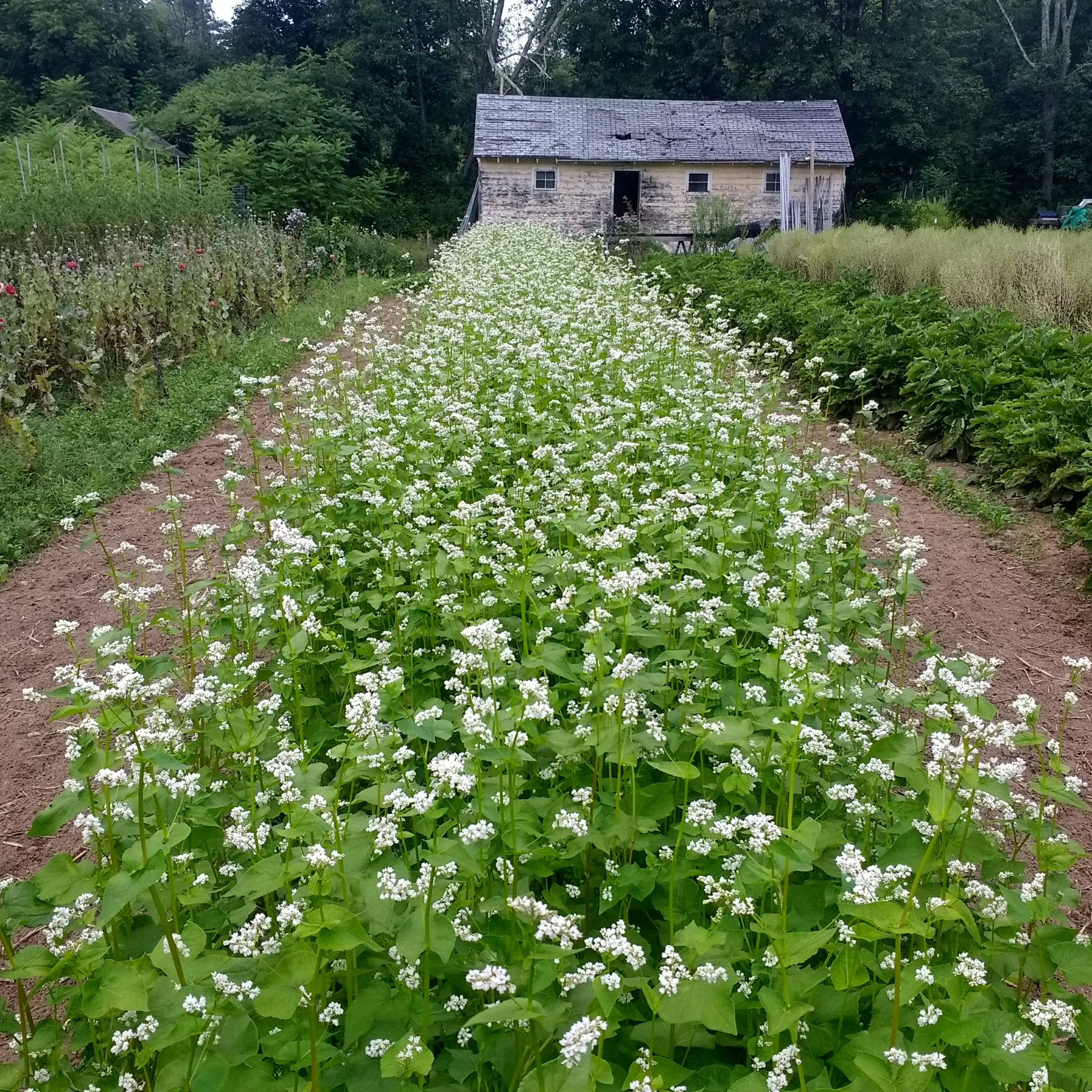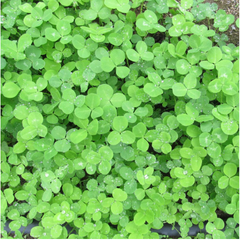
The Whys and Hows of Fall Cover Crops
Here at the farm, as we enter the most active part of the seed saving season and continue to sow biennial seed crops (to overwinter), we are also starting to think about end-of-season garden tasks that will improve the health of our soil in the dormant season. There are three main ways to build soil health on a farm and in the garden: adding compost, balancing minerals through adding amendments, and sowing cover crops wherever soil is bare. Now is a timely moment to consider cover crop options.
Cover cropping is a beneficial practice at any scale of agriculture, but it is often overlooked in a vegetable garden, since cover crops are traditionally plowed under, which means tractor power – an element not usually present in a home garden. There are, however, ways to circumvent heavy machinery and still benefit from cover crops.
A cover crop does not have a botanical definition, it’s simply any crop that covers bare soil when it is not used to grow another crop. Cover crops serve many different purposes, including adding organic matter to the soil, loosening compacted soil, adding and balancing depleted nutrient levels, controlling erosion, attracting pollinators, and controlling weeds.
How to Grow Cover Crops: Cover crops don’t require nearly as much maintenance as veggies, but they do ask for some of our attention. Prepare beds for cover crop similarly to how you do for other crops: weed, till, perhaps add some compost and amendments. In drought times – give them some water. And, don’t let them go to seed! It’s rare that we advocate for not saving seeds, but cover crops, by nature, are weedy, so letting them drop seeds means that they may come back as a nuisance to your garden. (If you do want to build your own cover crop seed stock, designate one remote corner of your plot for that project.) Many cover crops benefit from mowing: aside from eliminating the self-seeding issue, mowing actually increases foliage and root growth for some crops such as clover.
Once it’s time to re-activate a bed and plant new annual vegetables next spring, cover crops should be removed or, if they are dry enough, left for mulch. To remove, the crops can be plowed under, pulled like weeds, or chopped up with a scythe or lawnmower. The remaining foliage can be composted, to eventually return to the garden. In fact, if composted first, the cover crops will provide more balanced nutrients for your soil.
Types of Cover Crops: Cover crops are broken into two camps: ones that are killed by winter temperatures and ones that spring back to life in spring. The former are good to plant in beds dedicated to early season crops, such as onions or greens, because these beds will be ready to work as soon as spring weather cooperates. The latter are good for later season crops, because that allows the cover crop time to grow back again and continue protecting the bed until the gardener is ready to remove it and replace it with, say, tomatoes.
For Summer:
Buckwheat – fast growing, pollinator attracting, and weed choking, grows in summer warmth, good one to keep on hand and sow in any bare parts of the garden at the height of the season.
White Clover and Crimson Clover - Clovers can be sown nearly any time, but spring and late summer are best. White Clover is great at patching up lawns, and it provides nitrogen to nearby plants. Clovers also attract beneficial pollinators to the garden.
For Fall:
Oats and Field Peas – planted together in September, these plants partner well to return nutrients and boost organic matter in your soil. They will grow a little in the fall, and in the spring (if winter isn’t unusually harsh), the peas (which increase nitrogen levels) will climb the oats (which have deep roots to aerate compacted soil). Remove them by mid-April, before the plants get large.

Medium Red Clover - has thick roots that will build organic matter in your soil. As well as fixing nitrogen, clover also draw up nutrients that are below most root lines closer to the surface, making them accessible to vegetable crops that follow. It is a perennial and will grow back in spring when you should mow to incorporate.
Winter Rye is a quick growing, winter hardy, cereal grain with deep roots that help alleviate compaction. It can germinate and grow (although slowly) in temperatures as low as 33 degrees and is best planted from August to October. Winter rye will produce a lot of dry matter that can be used as mulch. When beds are ready for planting the following spring, rye can be tilled under or, for a no-till approach, mowed down when the rye is in flower.
Fava beans, Field Peas, Austrian Winter Peas - and other hardy legumes are great nitrogen fixers and work well particularly in a shorter season; in mild climates, fall-sown crops will come back in the spring and continue covering the soil until it’s ready to be worked. In zones 6 and colder, these crops will fix nitrogen through late November and then die when winter temperatures turn severe.

Hairy Vetch – is a pretty and delicate plant that grows vigorously until it is winter-killed; it dries well for mulching.
Tillage Radish – is famous for its large taproot with which it can drill through compacted soil to loosen it, opening up deeply buried supplies of nutrients for crops with shallower root structures; its foliage supplies organic matter and a spring-time snack.
Leftover seeds – many other crops serve well as temporary cover crops. Search through your personal seed library and see if you have seeds for crops that produce a lot of foliage quickly, but are also easy to remove (leafy greens or even bush beans can cover a bed). Calendula and borage can serve as springtime covers; sunflowers, cosmos, and marigolds in summer; bachelor buttons and crimson clover in fall.
Additional Resources from Cornell University
All you’ve ever wanted to know about cover crops
And one more from us! Fall cover crop planting chart







